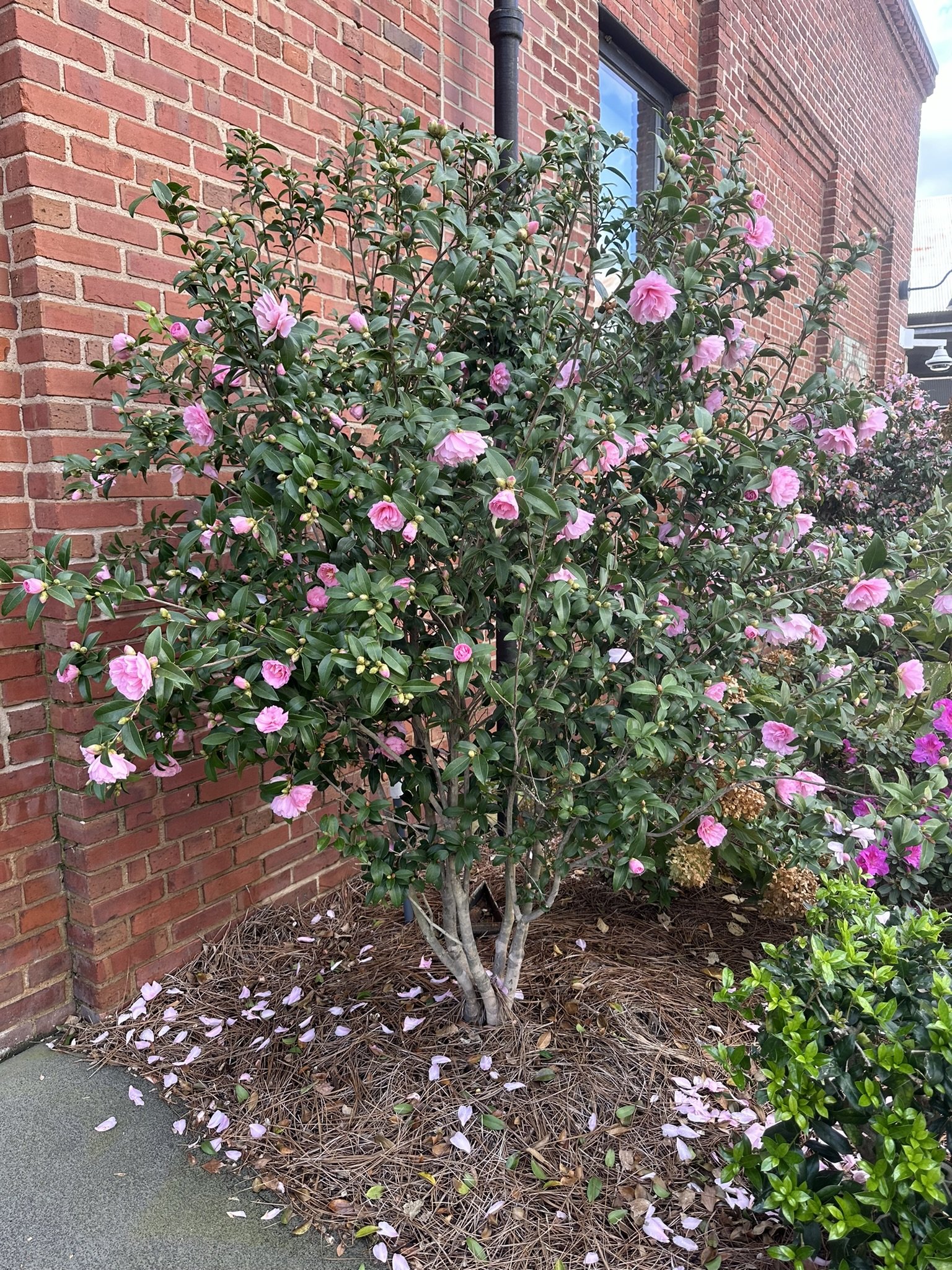Meet the Sasanqua Camellia
Sasanqua Camellia | Camellia sasanqua
How do you know it’s me?:
I am a medium-large evergreen, woody shrub.
My leaves are dark green and glossy, with a thick, leathery texture and serrated edges (usually).
My leaves are alternate.
My fall flowers are delicate, with papery petals, and sometimes with a yellow center of stamens. Compared to Camellia japonica, my blooms are smaller and daintier.
My flowers unfurl from their buds in a rosette fashion, and drop off cleanly and entirely, rather than one petal at a time.
I have smooth grey-brown bark.
How big do I grow?: 5’ - 14’ height and 5’ - 7’ spread.
Sun-seeker or shade-lover: Part shade.
Where I prefer to put my roots: Well-drained soils with a neutral to acidic pH. I am tolerant of a variety of soil types excluding heavy clays, and fairly drought tolerant once established.
Hardiness: Zone 7-9. Avoid drying winter winds when choosing where to plant me.
Original home: I am native to Japan.
Colors: My flowers are typically pink, white, or red.
When I bloom: Fall to winter.
Wildlife friends: Insects, especially bees, are attracted to my aromatic flowers.
Flora Fun Facts: I am the state flower of Alabama.
More Info: The Sasanqua Camellia can be found in warmer regions of the US, where its vibrant, rose-like blossoms create stunning fall/winter color. The bold, green leaf texture and colorful flowers bring a special beauty to the garden when much else has gone dormant. The Camellia feels like a secret, as it exists as a foliage plant much of the year - its beauty waiting to unfurl when the garden needs its color most.
There are many ways you can tell Sasanqua Camellia apart from its close relative - Camellia japonica. It flowers in fall to winter, while japonica flowers from late winter into spring. Also, the Sasanqua’s blooms are generally smaller and less formal in appearance. It tends to have smaller leaves than japonica.
A member of the Tea Family (Theaceae).
Can be kept as a shrub or pruned into a small tree (depending on cultivar). There are many dwarf forms.
Camellia species are currently being studied for their potential health benefits. Camellia seed oil may have anti-inflammatory, antioxidant, and disease prevention benefits.
Historically, Japanese people would dry camellia flowers and add them to their tea for the aroma.
There are different classifications of camellia flowers based on their petal layering: single, semi-double, and double.









